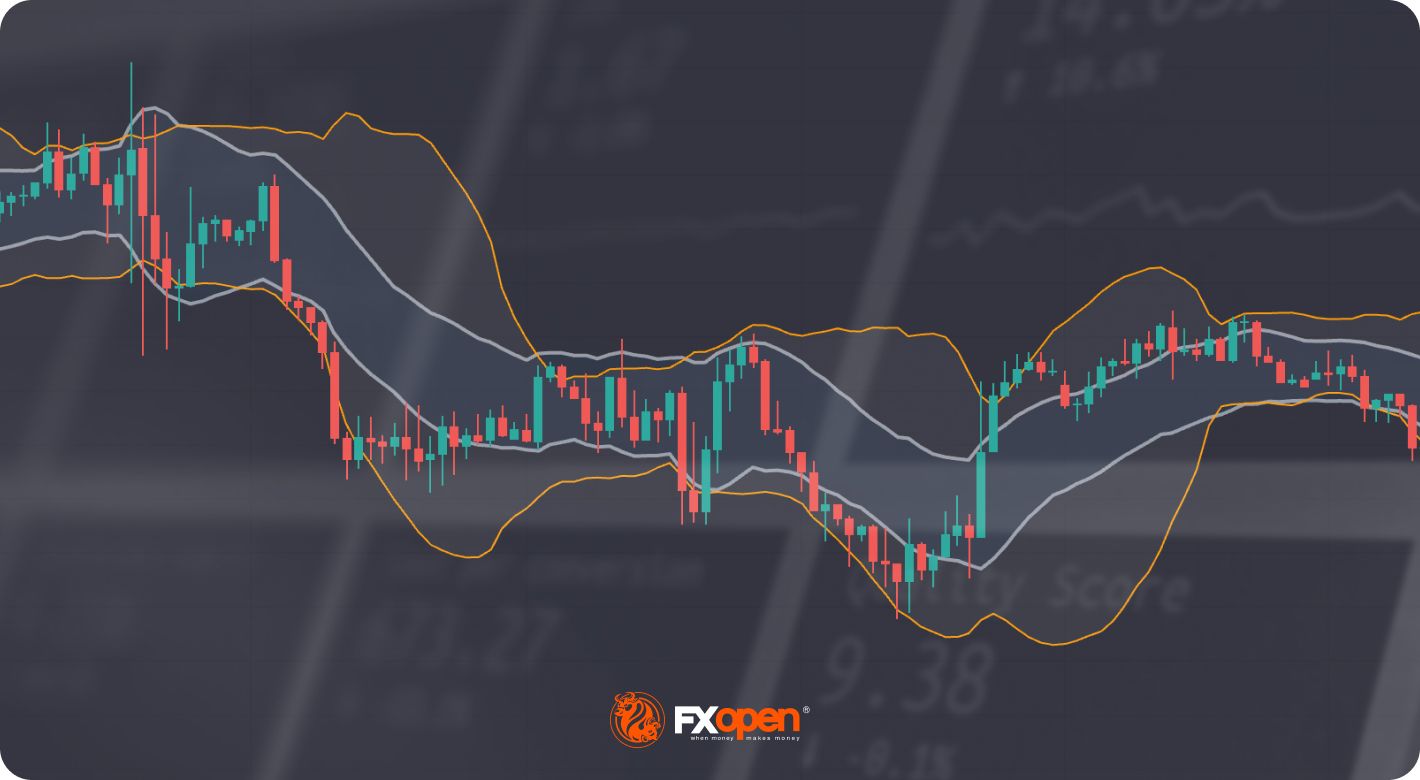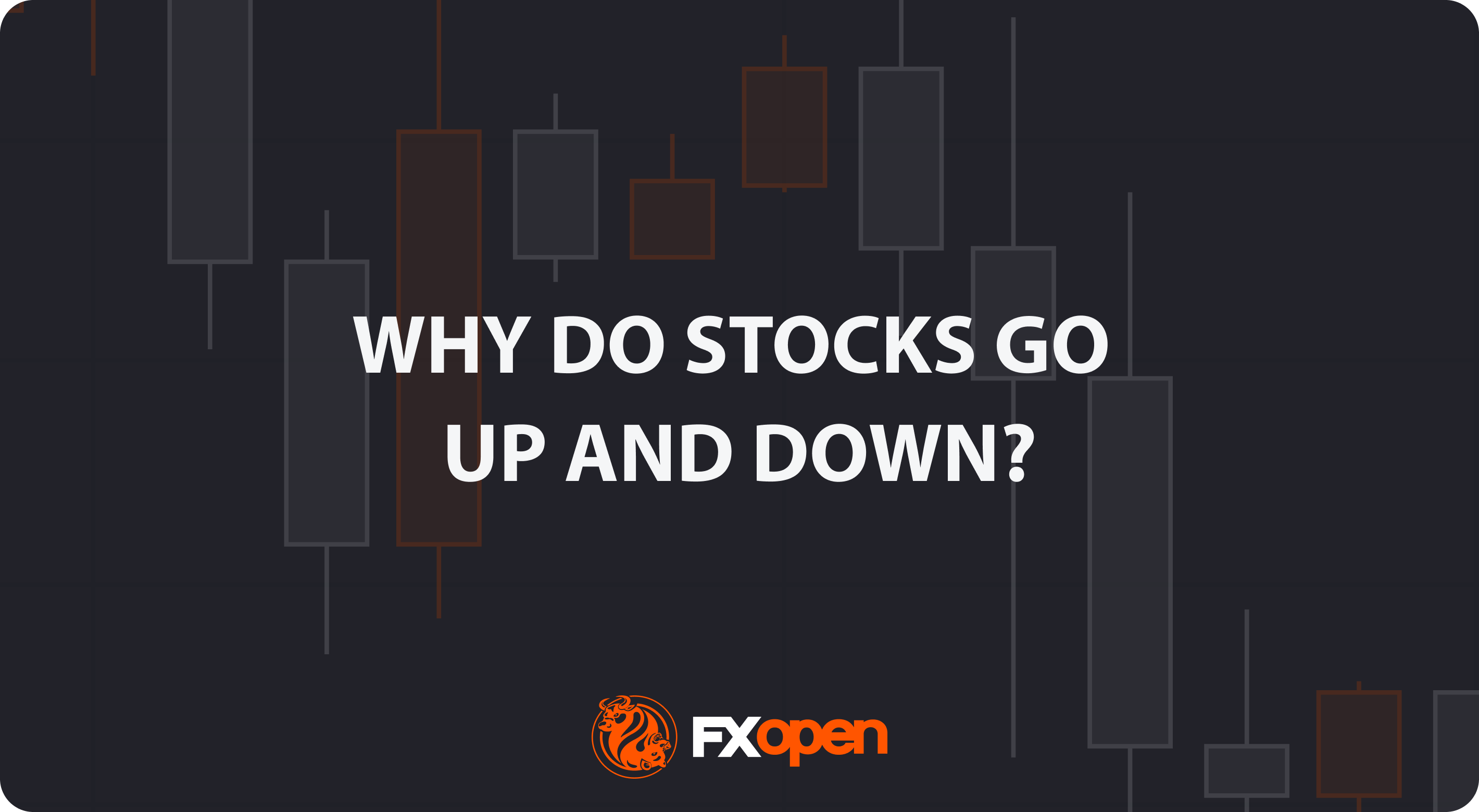FXOpen

If you’re a trader, you likely know that indicators are a valuable tool for identifying trends and finding entry and exit points. Two popular indicators are Keltner Channels and Bollinger Bands. Both help you measure volatility, but which one is better? In this article, we’ll dive into the differences between the two, explain their components, and discuss which one is best.
Keltner Channels
The Keltner Channel is an indicator that helps traders determine trends, momentum, and potential reversal areas in a given market. It’s named after Chester Keltner, who first introduced it in the 1960s. Keltner Channels are composed of three lines, forming an envelope.
The middle of these three lines is an exponential moving average (EMA), usually set to 20 periods. The upper and lower lines are multiples of the Average True Range (ATR) added or subtracted from the EMA, often double. The ATR measures the volatility of an asset by taking the average of the true ranges of its price movements over a certain period.
We can interpret Keltner Channels in several ways. The upper and lower bounds act as dynamic support and resistance levels, and traders use them to determine entry and exit points. Additionally, when price breaks through one of the bounds, it may signal a potential reversal or a continuation of the current trend, depending on price action and other technical factors.
For instance, a market in a strong bullish trend will appear to stick close to the upper line, often retracing to the EMA before continuing higher. Meanwhile, closes far outside of the lines may sometimes signal a reversal, given how far price has moved beyond its expected true range. Following a ranging market, determined when the lines are effectively horizontal, these kinds of extreme moves may signal a breakout.
Bollinger Bands
The Bollinger Bands is a widely used technical indicator that helps us identify an asset's volatility and potential price movements. It was created by John Bollinger in the 1980s and has since become a popular tool among traders of all levels.
Like Keltner Channels, the Bollinger Bands tool comprises three components: the middle line and two outer lines. The middle line is a simple moving average (SMA), typically 20 periods long. The upper and lower bands are calculated by adding and subtracting a multiple of the price’s standard deviation from the SMA, respectively. This multiple is set to two by default, but some will adjust it according to their preferences.
Instead of using the true range, Bollinger Bands use standard deviation (STD) – the square root of the variance of a set of price movements over time. Because they utilise standard deviation, Bollinger Bands are slightly more responsive to volatility than Keltner Channels. When the range constricts, volatility is low; and when the range expands, volatility is increasing. Many traders prefer Bollinger Bands to gauge volatility in the market.
As with Keltner Channels, the bands show dynamic support and resistance levels. They’re also quite effective when used to detect reversals – explained shortly. Additionally, we can apply Bollinger Bands to detect trends/breakouts when price hugs the bounds, though arguably not as well as Keltner Channels.
Keltner Channels vs Bollinger Bands
So, we know that using Keltner Channels and Bollinger Bands helps us to measure volatility while trading. But what exactly are their key differences?
ATR vs STD
The first and most fundamental difference is how each indicator measures volatility. ATR, used in Keltner Channels, takes the average of absolute changes in price, or an average of the true range. The standard deviation used by Bollinger Bands indicates how much price may deviate from its average.
While the difference may seem subtle, it can be significant in certain market conditions. Standard deviation gives more weight to larger values over smaller ones, effectively making Bollinger Bands more responsive to volatility.
EMA vs SMA
The second is the moving average both indicators use. Keltner Channels employ an exponential moving average, which is more responsive to recent price action than other moving averages.
Bollinger Bands implement the simple moving average, which reacts slower than the EMA. The impact isn’t as significant as ATR vs standard deviation, but the more responsive nature of the EMA may help traders get into positions more often if they’re trading pullbacks.
Trading Trends
To determine a trend with Bollinger Bands, we typically look for the bands to start widening, which indicates volatility (usually following a breakout). When the bands become tight, it’s expected that a new trend could be about to form.
To identify a trend using Keltner Channels, we can examine whether it slopes up or down. Given that Keltner Channels are often slower moving, multiple closes outside the channel can show us that an asset has momentum and is looking to continue the trend.
Trading Reversals
Statistically, 95% of price action should be inside Bollinger Bands with two standard deviations. This is significant for identifying potential overbought and oversold areas; moves beyond the bounds indicate that the price action is extreme and has a strong likelihood of reversing.
Keltner Channels can be used to find reversals, but it’s often much harder than with Bollinger Bands. A price will regularly breach or close outside of the channel in a strong trend while not crossing Bollinger Bands. It’s best to apply Keltner Channels to trend trading and identifying breakouts.
Using Keltner Channels and Bollinger Bands in a Strategy
Overall, Bollinger Bands are a more responsive indicator that may help us identify when volatility could be about to pick up (tightening) and when a new trend has likely started (widening). They’re well suited to trading reversals, thanks to the statistics of standard deviations.
Keltner Channels tend to be less responsive to volatility, but they may be much better at identifying strong trends, especially when price hugs or continuously closes beyond the lines. When price ranges, Keltner Channels often show a new trend forming much faster than Bollinger Bands, thanks to the telltale sloping of the channel.
So which one is best? Ultimately, it comes down to the individual trader and their style. Some may prefer to trade reversals with Bollinger Bands or jump on board breakouts with Keltner Channels. You could play around with both in the free TickTrader platform from us at FXOpen to get an idea of how to apply both indicators while trading.
Closing Thoughts
You should now have a solid overview of the differences between Keltner Channels and Bollinger Bands. While they may seem similar, taking the time to experiment with them will show you the qualities of each and how they could be applied to various scenarios.
Once you settle on your favourite, why not combine it with other indicators, like RSI or Stochastic oscillator, to develop your own strategy? Then, when you’re ready, open an FXOpen account and start using your system for real trading!
This article represents the opinion of the Companies operating under the FXOpen brand only. It is not to be construed as an offer, solicitation, or recommendation with respect to products and services provided by the Companies operating under the FXOpen brand, nor is it to be considered financial advice.
Stay ahead of the market!
Subscribe now to our mailing list and receive the latest market news and insights delivered directly to your inbox.








